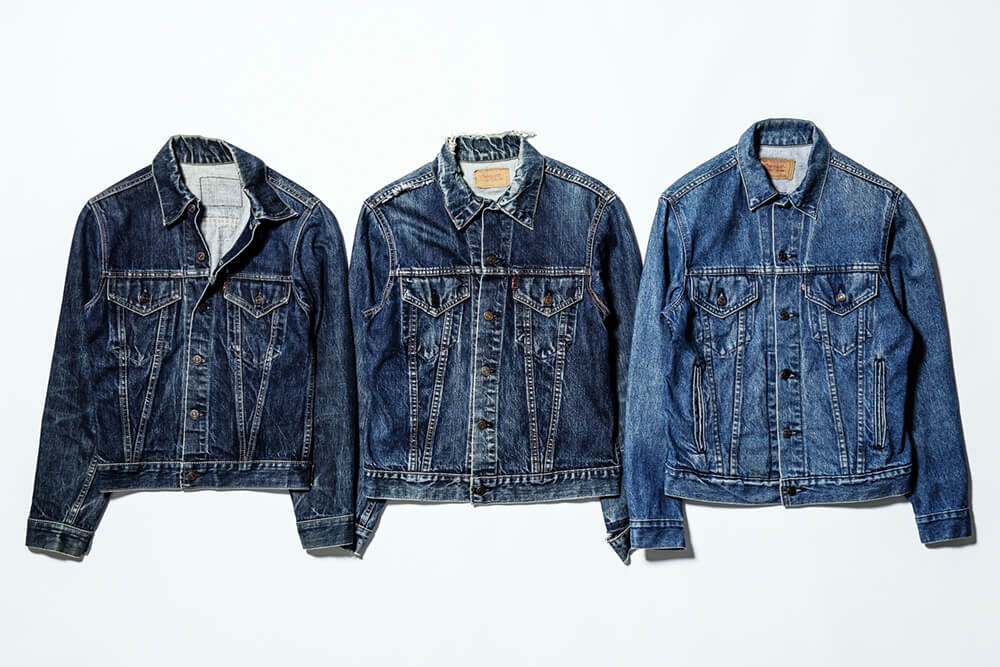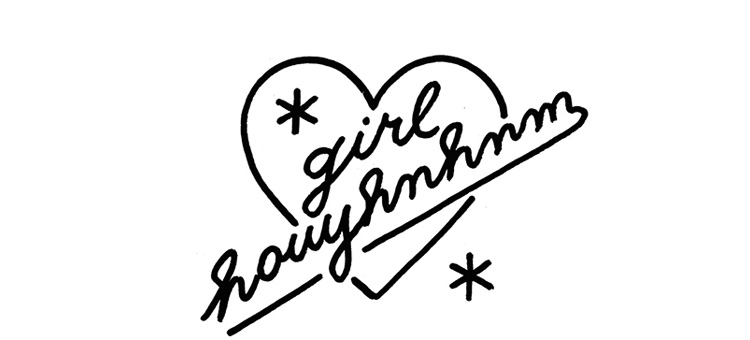
Girls Just Want To Have Fun!
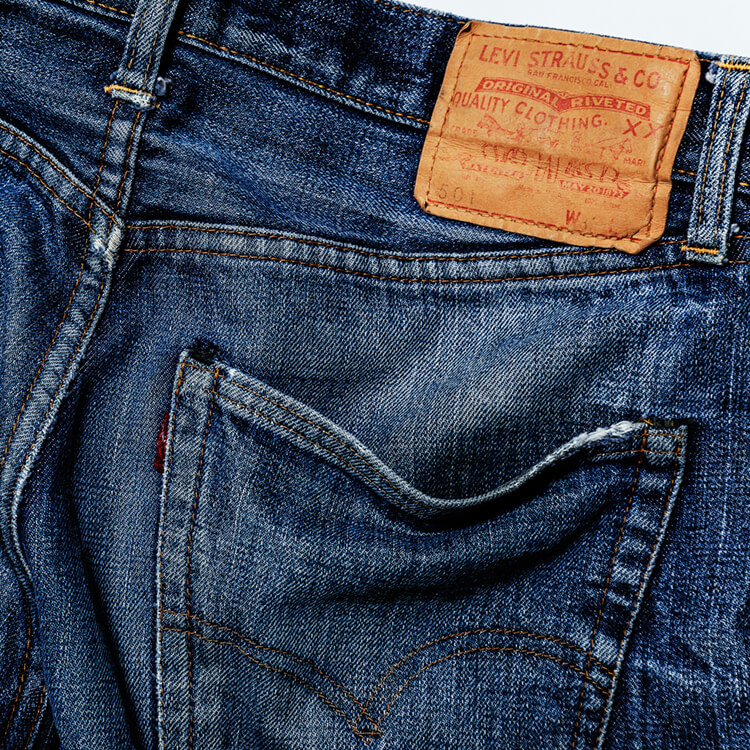
The Vintage Denims.
Scrutinizing denims with the god of vintage.
Photo_Kazumasa Takeuchi(STUH)
JAPANESE
ENGLISH
Do you have an experience that you showed off your Levi’s 501 by saying it’s a ”vintage”
that you merely bought it from a random thrift shop, and your friends laughed at you? I do!
That being said, I had a lesson of
“real vintage denims that will never be teased by anyone else”
from BerBerJin’s Yutaka Fujihara, the god of vintage denims.
Some of the denims are pretty pricy,
but imagine that you can wear them for next few decades. It’s definitely worth buying!
Whether a denim is considered as vintage or not is determined whether it’s produced before or after 1978.
- Levi’s masterpieces like 501 and 701 are currently booming among girls due to the trend of wearing high-waist denims. Firstly, I’d like to ask you a basic question – how do you select a vintage 501?
- Fujihara: When girls visit a vintage store to select a Levi’s 501, there are too many options like 66 or Red Line, and probably most of the girls don’t know the information very well, so they don’t even want to consider about it. As the major premise, the most important elements when choosing a denim is to think about the “sizing and color” than examining your knowledge.
- There are many people who purposely wear oversized jeans and tighten up with a belt to make up their styles. What do you think about them?
- Fujihara: I know the oversized style looks good, but usually the rise of 501 is deep enough, so they’d better wear it true to size. Generally, the high-waist design loses its best figure when a person wears it in oversized.
- How could a person know the best size for her/him?
- Fujihara: When you try on a denim, and if the sizing around hip is just-right, then it is yours. Yet, when you wear a denim by hip, there often is a space around your waist, so I guess you can tuck your tops inside to balance the sizing.
- I see. Next, could you tell us the difference between “vintage” and “regular” denims?
- Fujihara: Initially, I’ll tell you a little trivia that “a vintage 501 is the denim that is produced before the year 1978.” It is because 1978 was the year that Levi’s changed its indigo-dyeing process; thus, the coloring after wash is completely different then. So, that is a little trivia, and boys tend to be pickier on details such as the specific models, and they are more likely to buy jeans based on their knowledge. If you’re not a vintage-nut yet, you should visit a vintage shop to see the differences of the indigo-coloring between the regular and vintage denims, and choose whichever one you prefer.
- Among all the vintage 501s, which model would you recommend to a girl?
- Fujihara: If a girl is a vintage-geek, I’d day the “501XX” of which is produced before 1966. However, even the cheapest piece cost about ¥200,000 (*approx. US $1,750), so you know…:( If a girl is a vintage-amateur, I’d recommend “E (Big E)” which acquires unique coloring. Or, if she wants a more affordable item, “66 Prophase (Single)” is a great model as well.
GIRL HOUYHNHNM’s “My First Vintage 501” is 66 Prophase (Single).
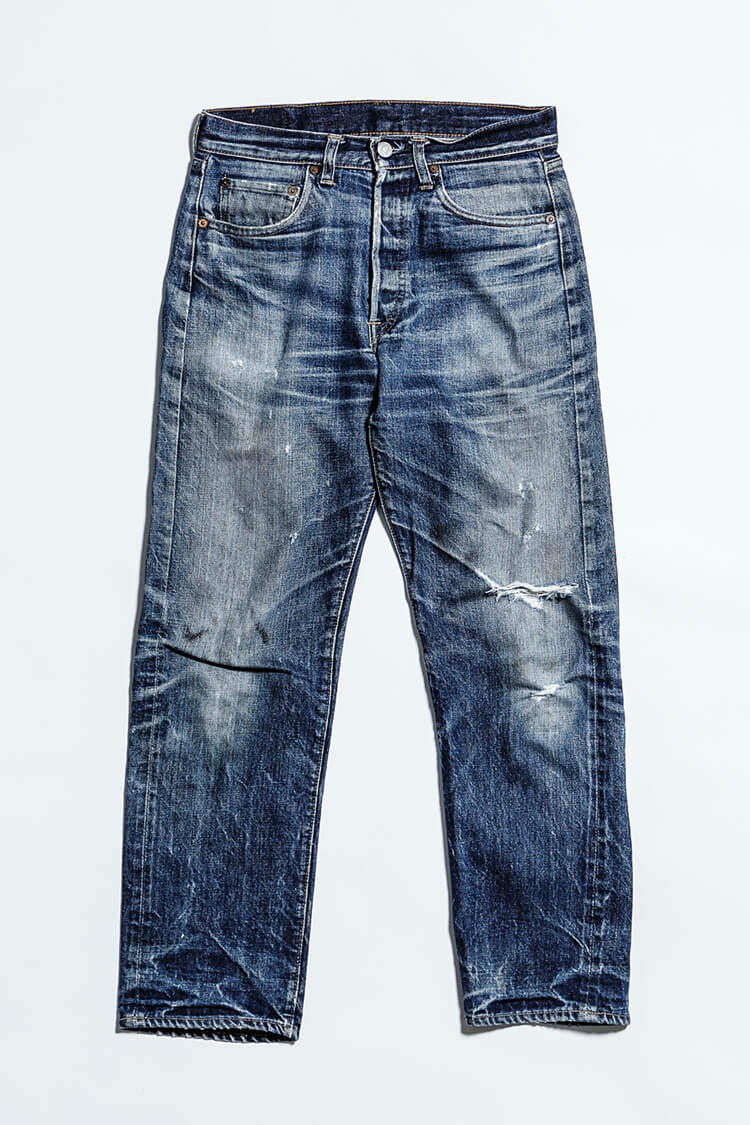
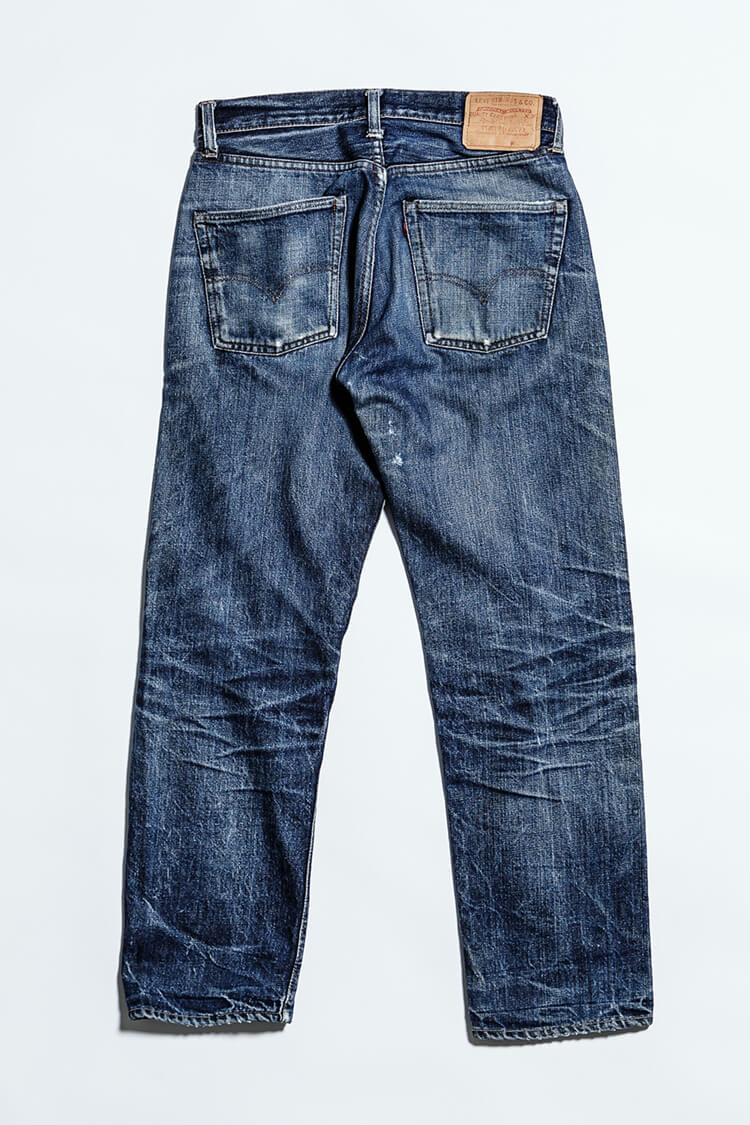
- Let us know the characteristics of the “E” models.
- Fujihara: The letters of “LEVI’S” of its famous red-tag on the back pocket has the capitalized letter “E”, which is the specialty of the “E” models. Actually, the letters on the red-tag became “LeVI’s” with the small letter “e” since 1973. Please check it out.
- Thanks for the interesting trivia again! The color on this piece seems to be faded away tremendously or I’d say too much.
- Fujihara: True, but it is actually an ideal color-off for a vintage denim. Actually, the sizing of the denim is for women, so I bought it merely for displaying, haha. I’d say the selling price would be about ¥70,000 (*approx. US $615). Usually, 501 models are not offered for women’s sizes, and I believe the smallest size starts from 27 inches. Surely, most of men cannot wear them, so the pricing is relatively cheaper than the common sizes.


- Please tell us about “66 Prophase (Single)”.
- Fujihara: The “66 Prophase” models, which are designed from 1973-78, obtain its red-tag, “LeVI’s”, with the small letter “e”. Another characteristic is that there is a hidden “6” mark behind the front top-button. Additionally, the stitch behind the back pocket adopts the single-stitch which is unique to the model that was produced till 1977-78.
- Oh, I thought the model is somewhat related to 1966 since the model is called “66”.
- Fujihara: The model was started to be called as a “66” model when a vintage store owner saw the mark of “1966” under a flasher which probably was a random number, but he named it the model “66”, and it became its nickname since then, haha.
- Since the model is called “Prophase (Single)”, I assume there is also “Anaphase (Chain)”, and how are they different?
- Fujihara: “66 Anaphase (Chain)” is basically the models that are manufactured after the year 1978, and the difference between the two models is dyes, essentially the colors. Yet, the colors are hardly distinguished if a person is not a denim-nut. Surely, even the “Prophase (Single)” was produced for 6 years (1973-78); therefore, the colors also differ within the same model, and I think the colors from 1973-74 are relatively better in my opinion. Many pieces from the later time like 1977-78 do not fade its coloring very nicely. By the way, “66 Anaphase (Chain)“ and its subsequent model, “Red Line”, are almost equivalent in its colors, so I personally integrate them as the “Red Line”. A deadstock of the “66 Anaphase (Chain)” is invaluable, but if it’s worn previously and the color already faded away, it’s almost no difference from “Red Line”.
- It’s nearly impossible to differentiate “vintage” and “regular” pieces for an amateur.
- Fujihara: Absolutely, so everyone must come to BerBerJin’s vintage denim room, which is located at the basement, to inspect the differences, haha. (BerBerJin’s basement store holds plentiful denims that are all produced before 1978.) Usually, Atari, white wrinkles/lines on a selvage denim, is obvious spots to compare the differences. The vintage model on the left in the pic acquires the most beautiful Atari, and Tateochi, vertical white lines, also seems much better than the regular one on right.
- I see. I can now tell the differences, in which most of the girls on streets are wearing the regular denims.
- Fujihara: We call it “flat”, referring to the coloring, as a vintage-store terminology. Nevertheless, 90’s style is currently boosting in the city, so girls today probably prefer these tints of the regular models.
- Absolutely. I also think light blue and a bit yellowish-blue are today’s trend as well.
- Fujihara: Because it's part of my work, I observe a lot of denims from contemporary brands, but I unfortunately see most of the colors are inspired by those 80’s and 90’s denims. It’s definitely not bad, yet I personally think the real vintage’s deep indigo is the best coloring. My philosophy is “older a denim is, the better indigo it has.” Additionally, those yellowish and brownish denims are honestly just stains and dirt. The tints are somewhat booming, but they are merely yellowish which is just stained and that’s end of story, haha.
- Haha. Why 1978 was such a year for such the tremendous color shift?
- Fujihara: During the vintage era, denims were dyed by natural indigo, but the production method gradually shifted to use sulfurized indigo around the late 70’s. And, that was the same time when the stitches of the “66” models were modified, so the models were divided into the two periods “Prophase (Single)” and “Anaphase (Chain)”. Therefore, a vintage item’s natural indigo retains its deep, refined coloring.
- Is there any lowest entreaty you suggest to a girl, who don't give a da*n for whether vintage or not, to at least stick to “this” when purchasing a 501, haha?
- Fujihara: Um… I hope it’s at least “made in USA”. Levi’s changed its manufacturing location to Mexico after its production in the U.S. facility, and those “made in Mexico” models are actually high-quality, so they are getting pretty pricy recently. So, if a girl wants to stick to “vintage”, made in USA is the minimum requirement.
Let’s compare color-differences of the models before and after 1978!
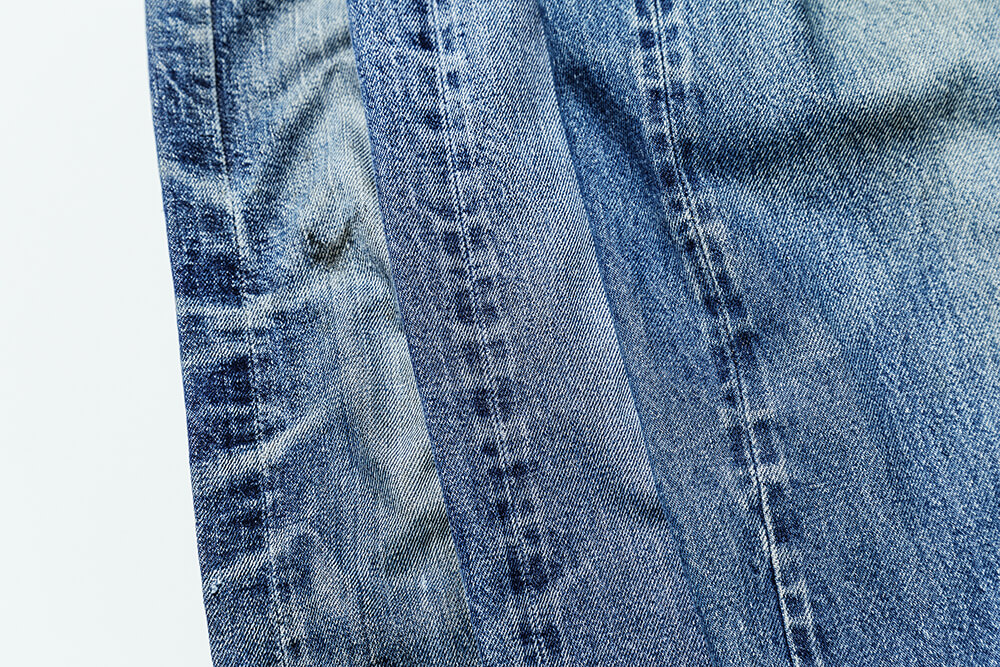
- The mode “701”. Isn’t it the renowned model that Marilyn Monroe had worn?
- Fujihara: Yeah. It’s designed for the high-waist, so the hip part is pretty loose, and the hems are tapered. There were replicas that were released on Levi’s Vintage Clothing, but they seemingly sold out real quickly. Actually, I visited Ron Herman to see the item, but they were already out of stock as well. The 701 models, which were firstly produced at the late 1930’s, gradually fluctuated their figures until the end of the 50’s. The items from the late 50’s are just too big around the hip, and I think the sizing is a bit too much.
Attention! 701 models, the series you guys are desperately seeking, are different in their shapes by particular years.

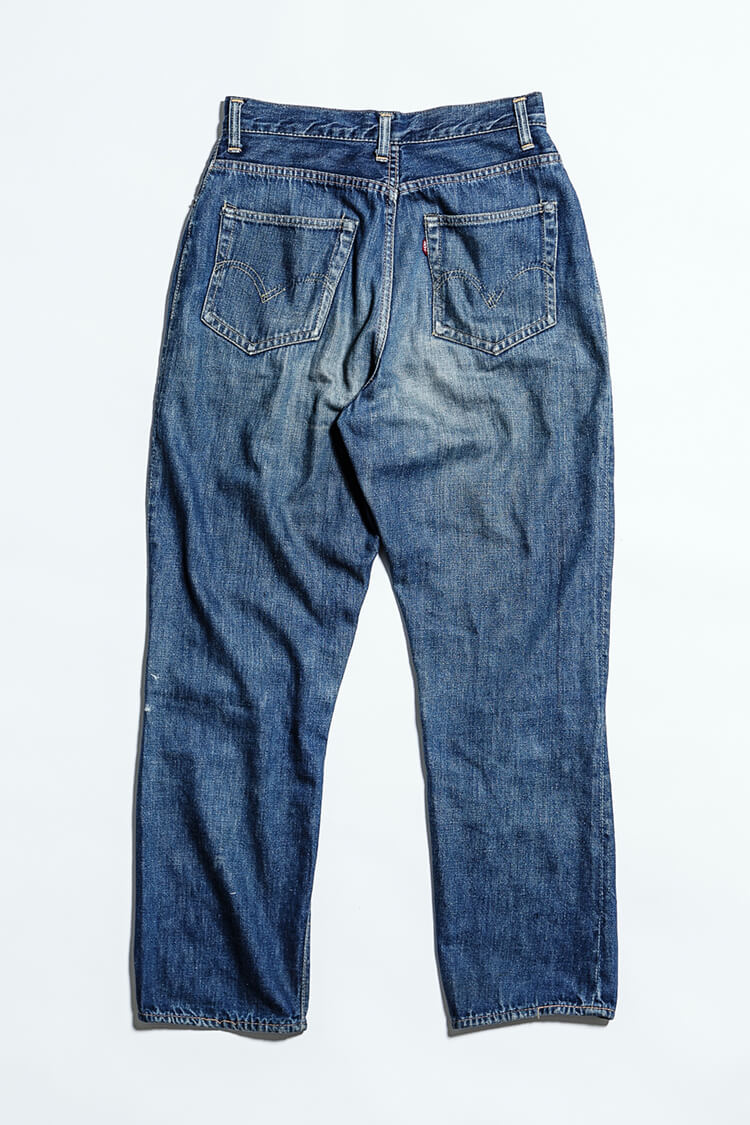
- Denim jacket is also popular recently, and the oversized ones are especially thriving.
- Fujihara: I’m fine with the girls wearing the large sizing such as 38, but I’d strongly suggest them to own at least one denim jacket that is true to their sizes.
Next: GIRL HOUYHNHNM’s lecture on denim jacket.
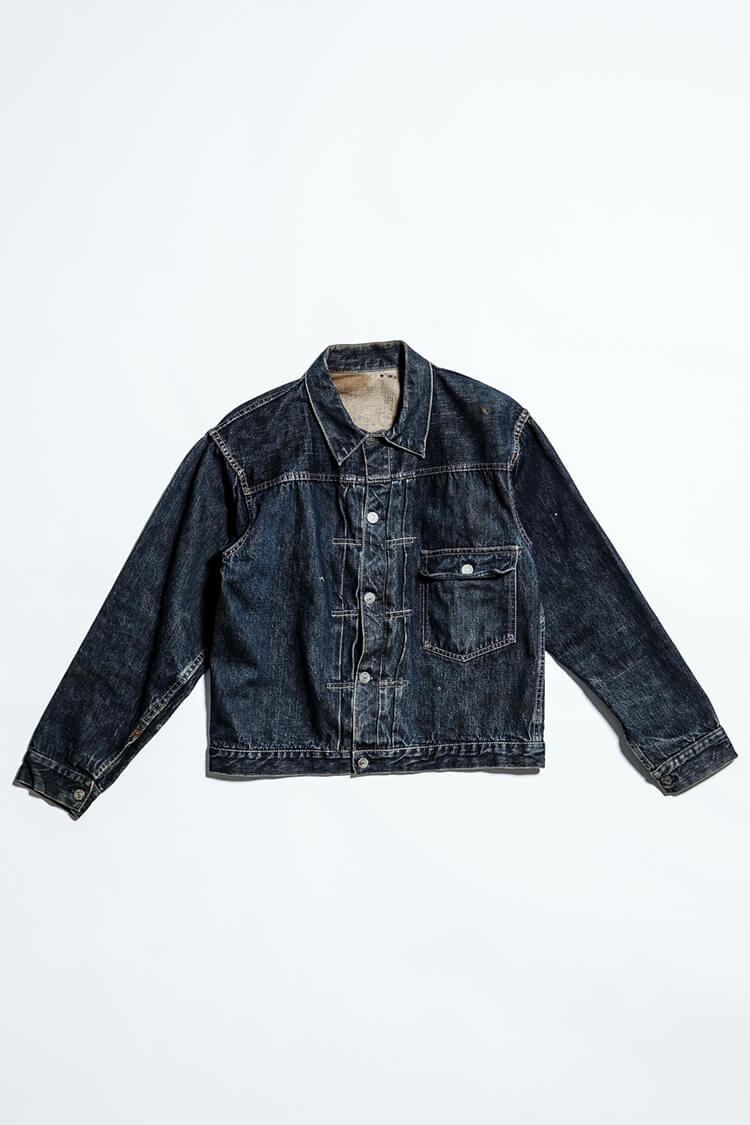
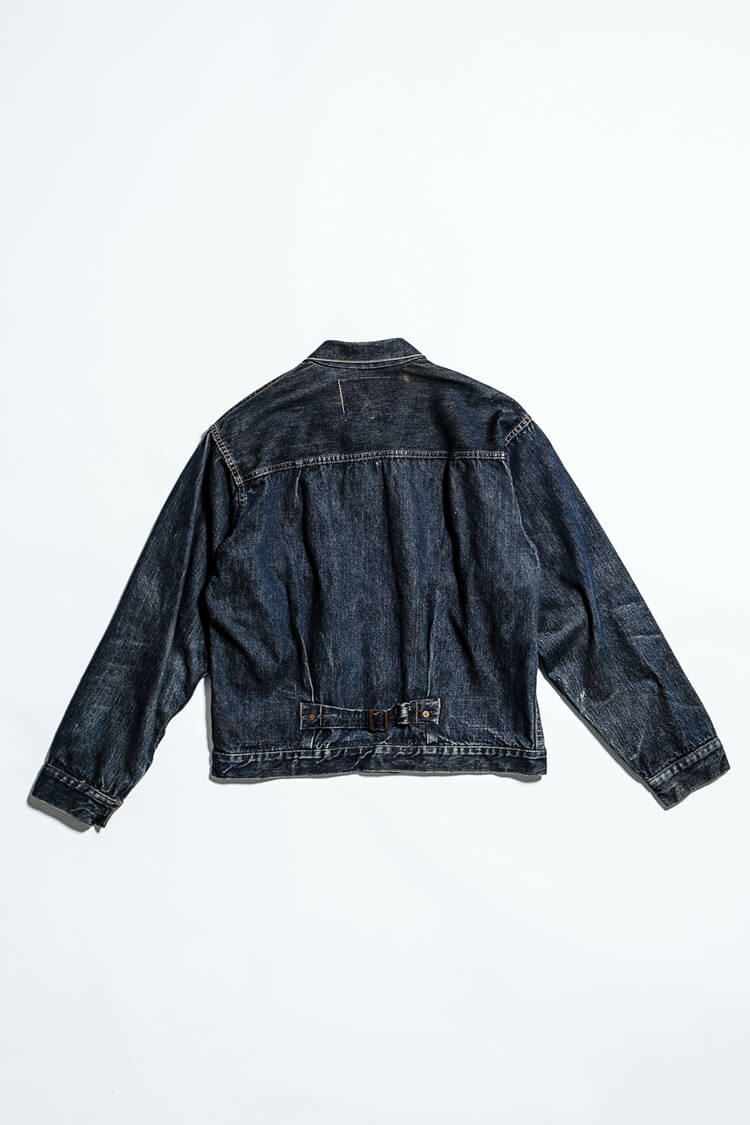
- It’s the most expensive item of the day, haha.
- Fujihara: The model is commonly called “First”. Its characteristics are the pocket that only exists on the left chest and the back-buckle on the waist. The piece is from the late 1940’s and it is in men’s sizing with the exquisite deep coloring, hence the upscale pricing. If it’s in women’s size with the similar coloring, the price will probably be around ¥19,8000 (*approx. US $1,750). Thus, the “First” model is most likely for vintage-nuts.
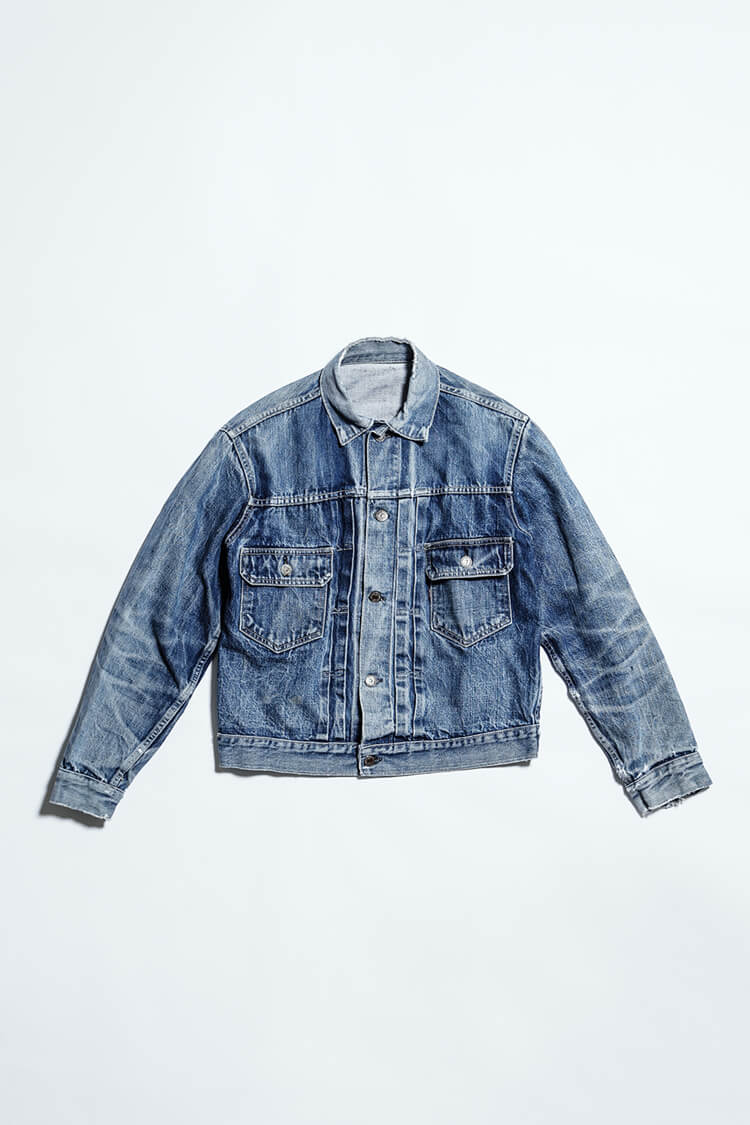
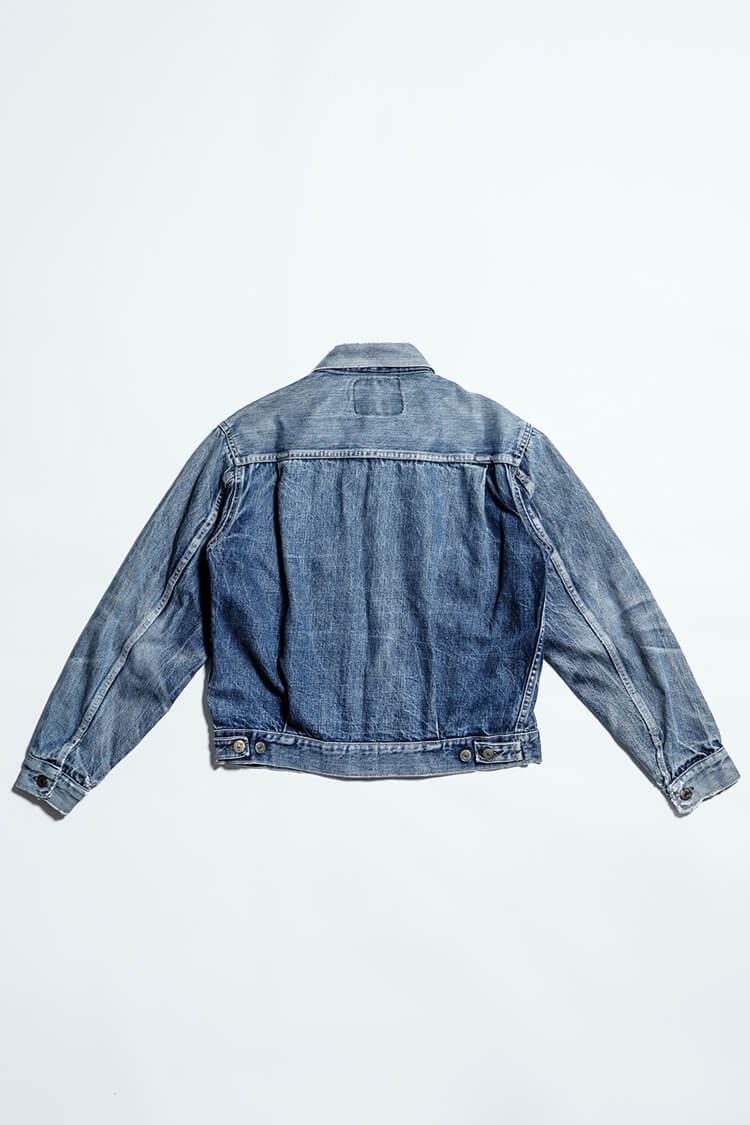
- I see an extra pocket on this.
- Fujihara: If a girl craves a denim jacket, the “Second” model should be the one. The shape is perfect. However, the small sizes are hardly found. The “Second” model, which was released in 1952, obtains the red-tag that the logo is only written on a single side with a leather-patch on neck. At 1953, the red-tag became both-sided and at 1958, it adopted the paper-patch, and then at 1963, it shifted to the third model. The “Second” had been transforming gradually through years, and it was even once reformed completely, so there are also models that are not classified as “XX”.

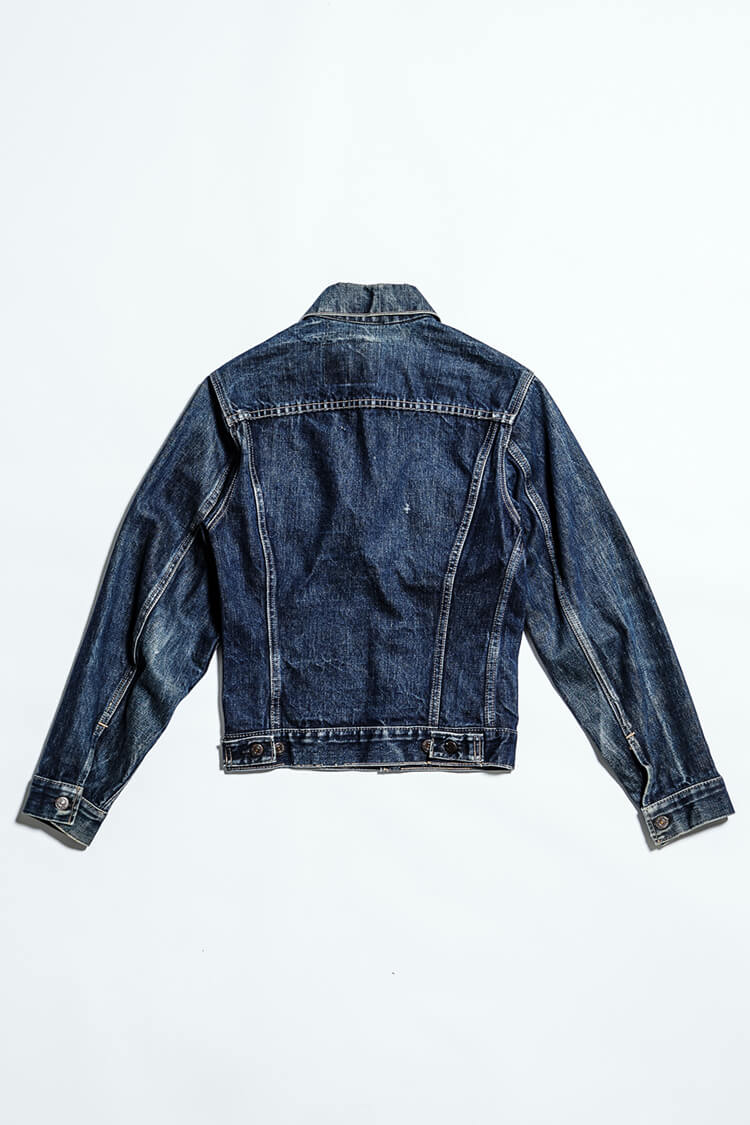
- I know this one. It's a typical model.
- Fujihara: The “Third” model is sharp in the body part but loose in the arms, so the balance is little complicated. When the production of “XX” models is ended in 1966, there was a new model in 1967 called “70505” where the length became slightly longer and the patch turned into smaller. I personally prefer the shape of that, and the price is pretty affordable, so it's a great piece to start with. If you can find your size, you must get it! Still, the “Third” model looks weird if the size doesn't fit your shoulder, so you’d definitely better to try it on first. It’s because the arm parts are so long.
- Fujihara: What can you tell? The left one already loses its paper-patch, and the ones in the middle and the right acquires thicker stitches. Well, the length is shorter too.
- I see.
- Fujihara: The right one, which is “70506”, has the most current vibe. Since it has four pockets and great coloring, people tend to wear it oversized, but the model is actually not considered as vintage. The one in the middle, “E”, was produced in the early 70’s, so it's vintage, but the piece on right, “70506”, was generated in the middle 80’s, hence not vintage. Additionally, “557” and “70505” are categorized as the “Third”, but I personally wanna call them the “Forth” since they are not “XX”.
- So… If we will buy a vintage denim jacket, we should go for the model “70505” with the two pockets, right?
- Fujihara: Yes, by true to your size, not oversized. I’m considering to create a subsequent version of my last publication, THE 501XX®-A COLLECTION OF VINTAGE JEANS, focused on denim jackets, so please look forward to it too! Thanks!
Let’s compare the “Third” and its subsequent models.
